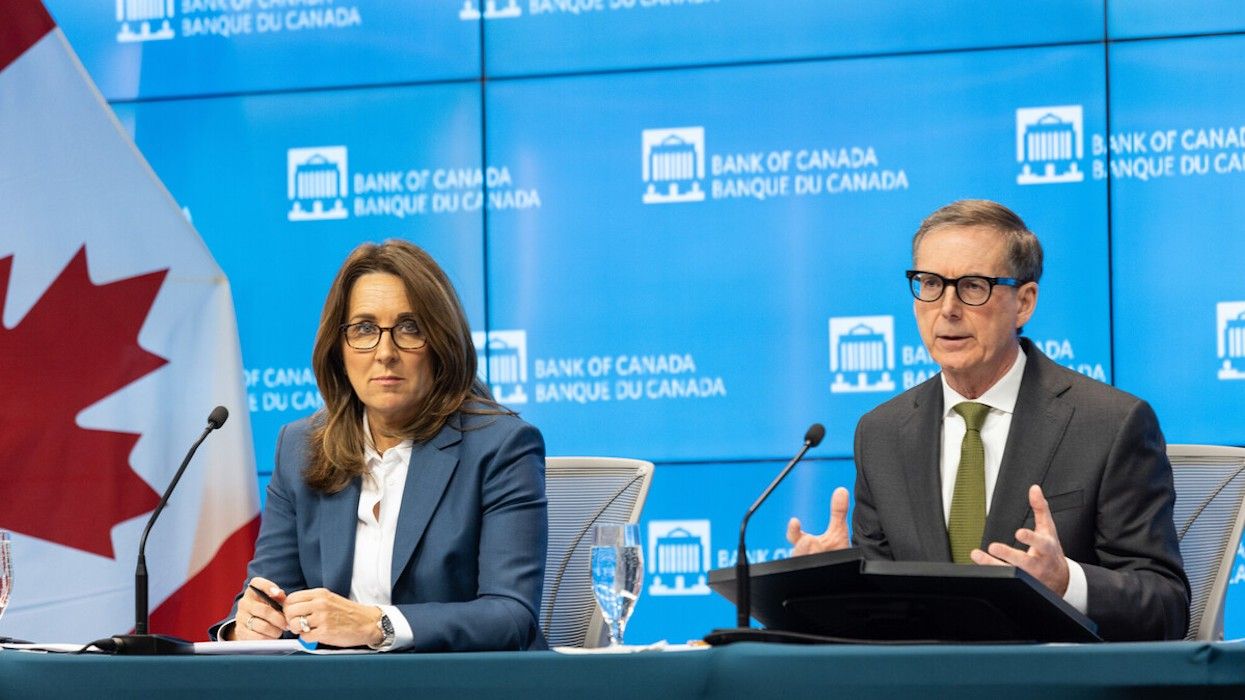Bank of Canada (BoC) Governor Tiff Macklem isn’t ruling out a June interest rate cut, though he maintains that it’s too soon to speak in absolutes.
“Yes, it's within the realm of possibilities,” Macklem said at a press conference on Wednesday, when asked by a reporter about the likelihood that the Bank will lower its policy rate at its next meeting, slated for June 5.
“I think we’ve been pretty clear, we are encouraged by what we’ve seen since January. If you look at our indicators, they're not all progressing at the same speed, but they've all been moving in the right direction: inflation has come down, core inflation has come down, the more timely three month measures of core inflation suggests there's downward momentum.”
However, moments later, Macklem said that the Bank still needs to see continued progress on all of these fronts before it becomes “appropriate” to reduce the rate.
“What is on our mind is that the decline we've seen in momentum is very recent. Wage growth has only just started easing, inflation expectations for households are only coming down very slowly,” he said. “Look, we are seeing what we what we hoped and we need to see, we just need to see it for longer to be confident that we are clearly on a path to 2% inflation.”
Wednesday’s press conference comes on the heels of yet another interest rate hold from the BoC. This is the sixth consecutive meeting to culminate in the rate being kept at 5%.
Canadians have been waiting with bated breath for some semblance of rate relief, and although the broad consensus was that there was a slim-to-none chance a cut would come today, economists have speculated that the Bank will kick off cuts at its June 5 or July 24 meeting.
But there is (still) some “diversity of views” amongst members of Governing Council on the cut front, Macklem noted on Wednesday.
The “diversity of views” bit is something we’ve heard before, mind you. The BoC’s last summary of deliberations, released on March 20, revealed that members of Governing Council weren’t quite in agreement when it came to the “evidence” needed to precipitate a rate cut, as well as “how to weight the risks to the outlook.”
The Shelter Inflation (Non?) Issue
Despite the fact that inflation has been on a downtrend for a few months now (falling to 2.8% in February after coming in at 2.9% in January and 3.4% in December), shelter costs remain the largest contributor to inflation. According to Statistics Canada's latest Consumer Price Index reading, shelter inflation rose 6.5% year over year in February, while rent and mortgage interest costs moved up to 8.2% and 26% respectively.
In speaking to still-elevated shelter costs on Wednesday, Macklem underlined that the Bank’s policy actions play a big role role in driving up mortgage interest costs in particular.
“We know that when it becomes appropriate to reduce the policy interest rate, those mortgage interest costs will start to come down. That is something we can control for as we think about our monetary policy response,” he added.
Macklem also emphasized that the BoC is “particularly focused” on core inflation, which excludes the eight most volatile total CPI components, including fruit, vegetables, gasoline, fuel oil, natural gas, intercity transportation, tobacco, and mortgage interest costs.
“One of the things our measures of core inflation have been doing is, if you look at the trimmed mean measure of core, it has been systematically kicking out mortgage interest costs through this whole rate increasing cycle,” he said. “It has not typically been kicking out other elements like rent or other elements of housing — and that's largely appropriate. I mean, the increases we're seeing in rents suggests the real tightness we're seeing in the housing market. That's part of the economy, we have to factor that in. It's not the only part of the economy, we have to factor it in with all the other parts, but it's not something you want to ignore.”
- How Each BoC Interest Rate Hike (And Hold) Has Implicated Home Sales ›
- With Two Months Of Near-Target Inflation, Can The BoC Finally Cut Interest Rates? ›
- Interest Rate Cuts Likely “Over The Course Of This Year”: Bank of Canada ›
- Odds Rise For June Interest Rate Cut Despite Inflation Uptick ›





















